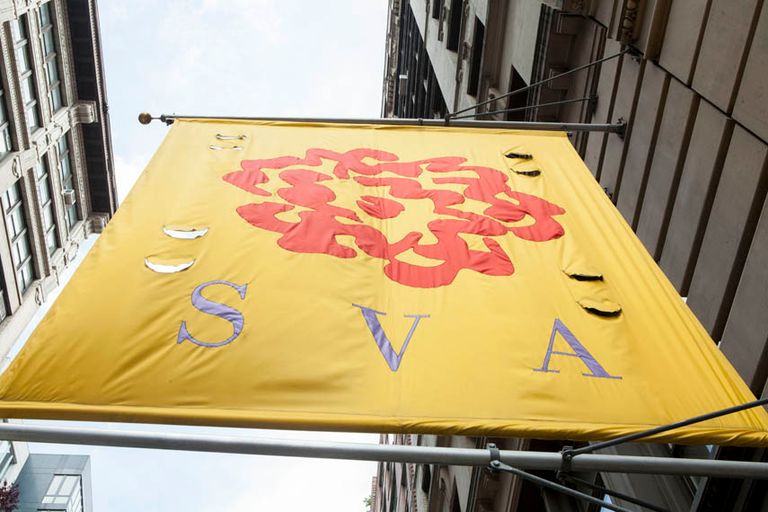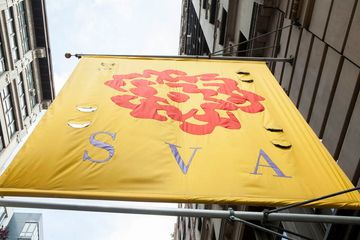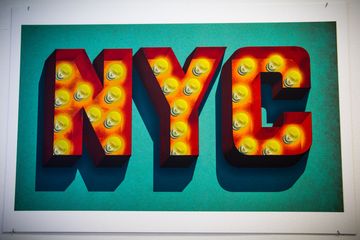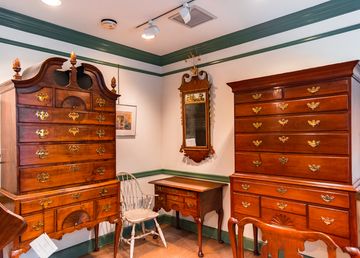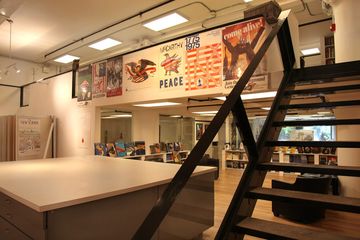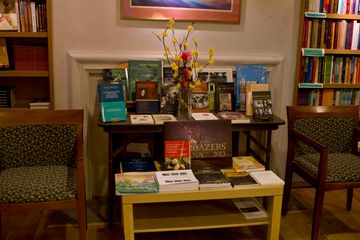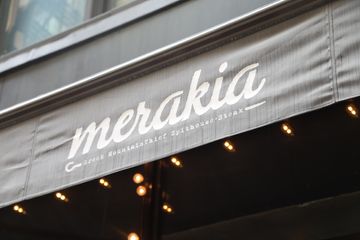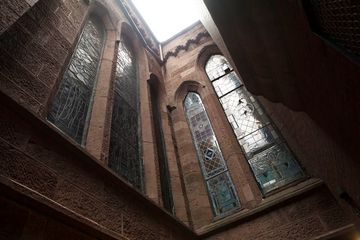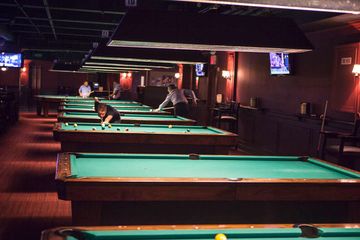Since 1901, when Ginsberg and Levy, Inc. began, the Levy family has garnered a distinct reputation specializing in American antiques primarily from the eighteenth and early nineteenth centuries. Though the art world lost a great man in early 2016 when Bernard Levy passed away at the age of ninety-eight, his son and grandson, Dean and Frank, are successfully carrying on the family business that changed its name to Bernard and S. Dean Levy in 1973. Frank, who appeared quite enthusiastic to be continuing the gallery as its fourth generation owner, explained that while the gallery contains a few pieces of English furniture that once lived in American homes, everything else was made right here. This is rare in the antique business, where European works usually have the strongest showing. I was interested to learn that some of Frank's favorite pieces are the framed needlework that decorate the corners of the first floor. He told me that the surviving needlework was mainly done by girls between the ages of eight and fifteen. The nice thing about needlework, Frank pointed out, is that collectors often know who made it, since their names are worked into it, and after a while it is easy to start to recognize different schools and teachers of needlepoint. Frank spoke to me about growing up in the family business. "As a kid, you learn that these things are heavy, " he said with a smile as we walked by a seventeenth century wardrobe. From a young age, Frank found the history of each antique fascinating. "I've always liked American history, " he admitted. He then went on to reflect that as a boy, he and his brother would play football with an antique highboy in his parents' room, which provided "a perfect goal post. " When he was in his twenties, however, he began working for the family business and started to become more interested in the clues that told him when and where something came from. Most of the pieces are from the eastern seaboard - Frank told me that the taller ones usually come from the South, where inhabitants wanted heat to be able to rise, and the shorter furniture comes from the North, where lower ceilings helped keep the heat inside. As for where the impressive collection is found, "Things show up everywhere. " Frank found one piece at an estate three blocks away, whereas a chair from Rhode Island was discovered at an auction in California. In addition to my conversation with Frank, I also had the pleasure of speaking with Melanie, a gallery employee, who shared with me that despite being on a side street, the gallery gets a fair amount of walk-ins. Recently, a man stopped in who commented that he was "taken with the portrait of the sheriff" in the window. Most of the gallery's customers, however, are collectors and frequent visitors. Bernard and S. Dean Levy has helped to build not only private collections, but countless public ones, including those at the Metropolitan Museum of Art and the Museum of Fine Art in Boston. The company is also proud to have helped to furnish a few historical house museums or help them to recover original furniture that was lost over the years. Touring the gallery with Frank, which is vaguely arranged chronologically, we began on the top floor. It is here that I discovered that many of the newest pieces from the nineteenth century are from New York, and made by three primary cabinetmakers - Duncan Phyfe, Michael Allison, and Charles-Honore Lannuier. Frank showed me how he "looks for little clues to find out where something is from and when, " showing me a drum on the leg of a table made by Duncan Phyfe that indicated that it came from a specific phase of his career. He then pointed out an elaborately decorated knife box. When Tom, the Manhattan Sideways photographer, commented that it looked like it could have come from the Art Deco period, Frank agreed, saying, "styles come back. "The fourth floor has furniture from the same period and a bit earlier, but with an emphasis on the country. Much of the furniture came from Connecticut and New Hampshire and was made from birch and maple trees. Frank indicated a dower chest that had a hidden signature from its maker, John Saltzer, etched into a painted urn on the side. We also saw an old lead-lined wine cooler with a stopper at the bottom which let out water. On the third floor, there were even earlier pieces, including one with a completely fictitious historic plaque claiming that it had once belonged to Martha Washington. Laughing, Frank said that if everything attributed to Martha Washington actually belonged to her, she would have needed far more houses to store her collection. The second floor had an impressive array of grandfather clocks as well as a desk with an extraordinary removable hidden compartment that allowed the owner to keep important documents in a safe space that could be removed from the desk in case of fire. When we returned to the first floor, we had traipsed through one hundred years of history, told in the language of furniture. It reminded me that Bernard and S. Dean Levy can boast a more-than-hundred year history of its own. "I'm proud we've been around this long, " Frank concluded.
